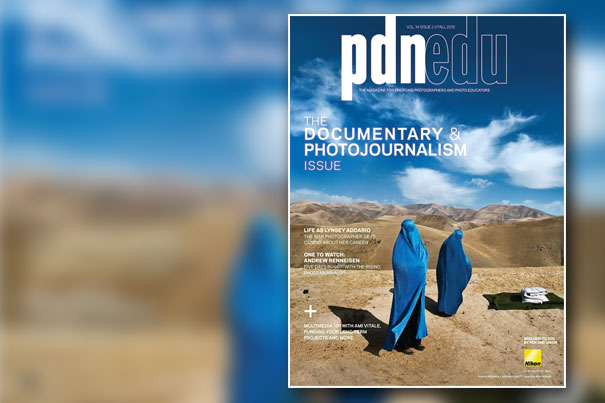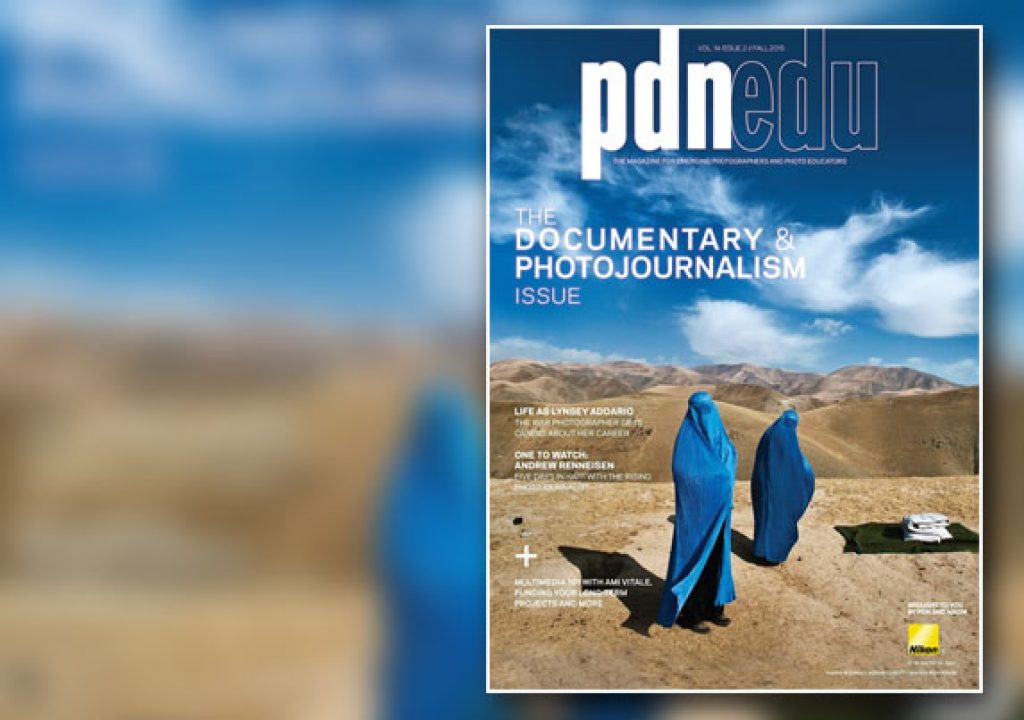
Ami Vitale’s revelation appears in the Fall edition of PDNedu’s digital edition, completely dedicated to Documentary and Photojournalism. The PDNedu also features the work of Lynsey Addario, Andrew Renneisen, Alexandra Hootnick and much more.
The 76 page edition of PDNedu offers multiple sources of inspiration for photographers aiming to enter the documentary photography and photojournalism market. Brought to you by Photo District News and Nikon — PDNedu has provided aspiring photographers and photo educators with real-world inspiration, techniques and business expertise for the past fourteen years.
This edition features an extensive article about Lynsey Addario, known for her empathetic coverage of conflict and critical social issues overseas. The new editor of PDNedu, Jacqui Palumbo, who takes over from Jill Waterman, who led PDNedu since its inception, writes in the editorial that Lynsey Addario “best-selling memoir, It’s What I Do, was picked up for a film adaptation by Steven Spielberg earlier this year. Addario reflects on her career and gives no-holds-barred advice about what it takes to be a war photographer…”.
The work of Andrew Reneissen, Getty Images Reportage Emerging Talent, and of Alexandra Hootnick, Syracuse University graduate student, fills some of the pages of this issue, which covers multiple themes of interest to both photographers and videographers. From the legal aspects of using found footage in a documentary film to interviews with both photographers and filmmakers, there is a little of everything to make for some interesting reading.
This issue also covers various opportunities and advice for aspiring documentarians and photojournalists, including which schools to attend, coverage of the affordable Foundry Photojournalism Workshop and how to fund your long-term projects.
The interview with photographer Ami Vitale is a center point of this issue of PDBedu. If you’re a photographer doing video as well, or just starting to explore the potential of moving images, reading through the interview will help you to understand you’re not alone if you feel insecure. Ami Vitale reveals how terrified she was when she accepted to do the Nikon D300S campaign without knowing how to use a video camera, and how it turned out to be the best thing she did.
The photographer has included video as a regular part of her work, and says, in the interview, that “motion work has helped me to be a better stills photographer. I look at stories very differently than I did in the past.” She also shares some tips about the importance of audio and stabilization, and states that it’s better to start with simple gear and learn the craft of storytelling first. That’s what it is all about.
Read the whole interview with Ami Vitale — and the magazine — at PDNedu.

